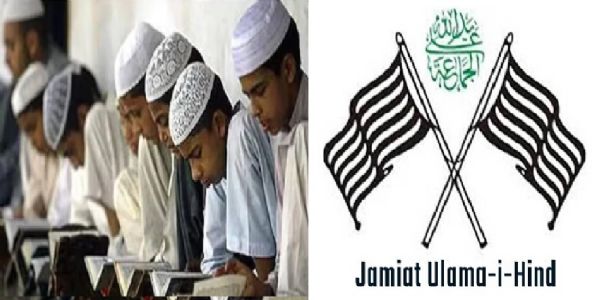
By, Vasudha Kanupriya
Every year, World Day Against Child Labour is observed on June 12; The Day was first sanctioned as a holiday by the International Labour Organization (ILO) in the year 2002, with the aim to raise awareness and activism to prevent child labour. The minimum age for employment (ILO Convention No. 138) and the worst forms of child labour (ILO Convention No. 182) were defined and spurred by ratifications to boost and foster a worldwide movement against child labour.
It should be noted that child labour is not peculiar to developing countries like India, but is a global phenomenon. According to the UN, a joint report by the ILO and the UNICEF (United Nations Children’s Fund) will be a key milestone this year; focus will be to present global estimates and trends of child labour, with a comprehensive assessment of global progress towards the elimination of the same. The estimates and trends identified therein will guide policy debates and calls for renewed commitment towards elimination of child labour.
It aims at strengthening prevention, protection, and partnerships to annihilate child labour.
Prevalence of Child Labour –
It was encouraging to note that since 2000 till nearly two decades, a steady progress in reducing child labour was noticed worldwide. But, in the last few years, several conflicts, crisis and the COVID -19 pandemic have pushed more families into poverty and have forced millions of children into child labour.
It is estimated that today, 160 million children are still engaged in child labour; that is almost one in ten children worldwide. Economic growth had been insufficient enough to support poor families and communities, compelling them to resort to child labour.
According to the UN website, “Africa ranks highest among regions both in the percentage of children in child labour — one-fifth — and the absolute number of children in child labour — 72 million. Asia and the Pacific ranks second highest in both these measures — 7% of all children and 62 million in absolute terms are in child labour in this region.
The Africa and the Asia and the Pacific regions together account for almost nine out of every ten children in child labour worldwide. The remaining child labour population is divided among the Americas (11 million), Europe and Central Asia (6 million), and the Arab States (1 million). In terms of incidence, 5% of children are in child labour in the Americas, 4% in Europe and Central Asia, and 3% in the Arab States.”
These statistics are alarming enough and call for more result-oriented measures and models to reduce and eliminate child labour.
Child Labour In India –
As mentioned by the Ministry of Labour and Employment, Government of India (GOI), “the problem of child labour continues to pose a challenge before the nation. Government has been taking various pro-active measures to tackle this problem. However, considering the magnitude and extent of the problem and that it is essentially a socio-economic problem inextricably linked to poverty and illiteracy, it requires concerted efforts from all sections of the society to make a dent in the problem.”
According to the figures from the Census 2001, “there are 1.26 crore working children in the age group of 5-14 as compared to the total child population of 25.2 crore. As per survey conducted by National Sample Survey Organisation (NSSO) in 2004-05, the number of working children is estimated at 90.75 lakh. As per Census 2011, the number of working children in the age group of 5-14 years has further reduced to 43.53 lakh. It shows that the efforts of the Government have borne the desired fruits.”
The Gurupadswamy Committee formed in the year 1979 by the government to study the issue of child labour and to suggest measures to tackle the same. The Committee conclude that as long as poverty prevailed, it would be very difficult to totally eliminate child labour; and therefor a more practical approach will be to identify hazardous areas and ban children from working in the same.
After getting recommendations form the Gurupadaswamy Committed, the Child Labour (Prohibition and Regulation) Act came into existence and enacted in the year 1986. According to the Act, children were not be employed in certain hazardous occupations and processes and defined regulations in working conditions in others.
The list of hazardous occupations and processes was being regularly expanded and broadened on the recommendations of Child Labour Technical Advisory Committee (CLTAC) that was constituted under the Act.
Later, the Act was amended in the year 2016 with the enactment of the Child Labour (Prohibition and Regulation) Amendment Act 2016, prohibiting the employment of children below fourteen years in all areas of employment; provisions were defined for prohibition on employment of adolescents (14-18 years) in the “scheduled hazardous occupations and processes.
Initiatives Of State Governments –
State governments are supposed to take stringent actions to curb child labour in their respective states, by strictly implementing the above-mentioned Act and others, as well as work in close coordination with several non-profit organizations.
UP Government’s Pledge --
The Uttar Pradesh (UP) government announced launch of a mega awareness programme to mark the World Day Against Child Labour on June 12, 2025. The drive aims to make UP free of child labour by the year 2027.
The labour department is initiating a mega programme to eliminate child labour in coordination with various other departments including women and child development, home, health, education, social welfare, rural development, Panchayati raj, urban development and vocational education, informed a government spokesperson.
It was added that lack of reliable data was cause of major hurdles in the eradication of child labour; statistics were not updated since the 2011 census, it was said.
It was stated that data on working children and child labourers at the village level will be collected by the Panchayati Raj department and eventually shared with the department of labour and education; this will ease and expedite the implementation of the child labour elimination programmes in a targeted manner.
The Government is also partnered with UNICEF to compile a booklet with details of schemes run by various departments aiming to benefit child labourers and their families. The initiative will also largely publicise government’s policies to this effect and bring more people in their purview.
Naya Savera Scheme – The UP government was also working on re-implementation of the “NAYA SAVERA” scheme with the aim to provide better opportunities to child labourers.
There are plans to initiate the operation of ATAL RESIDENTIAL SCHOOLS for the children of the labourers, to prevent child labour in all divisions.
The Central Government is working with focus and dedication to eliminate child labour and give every child his/her fair share of care and education under the various schemes crafted especially keeping in mind he interests of the children.
It is the duty of the citizens too to participate in such drives that aim at elimination of child labour; people can be vigilant and may come forward to report incidents where children are employed in hazardous works and processes.
---------------
Hindusthan Samachar / Indrani Sarkar








